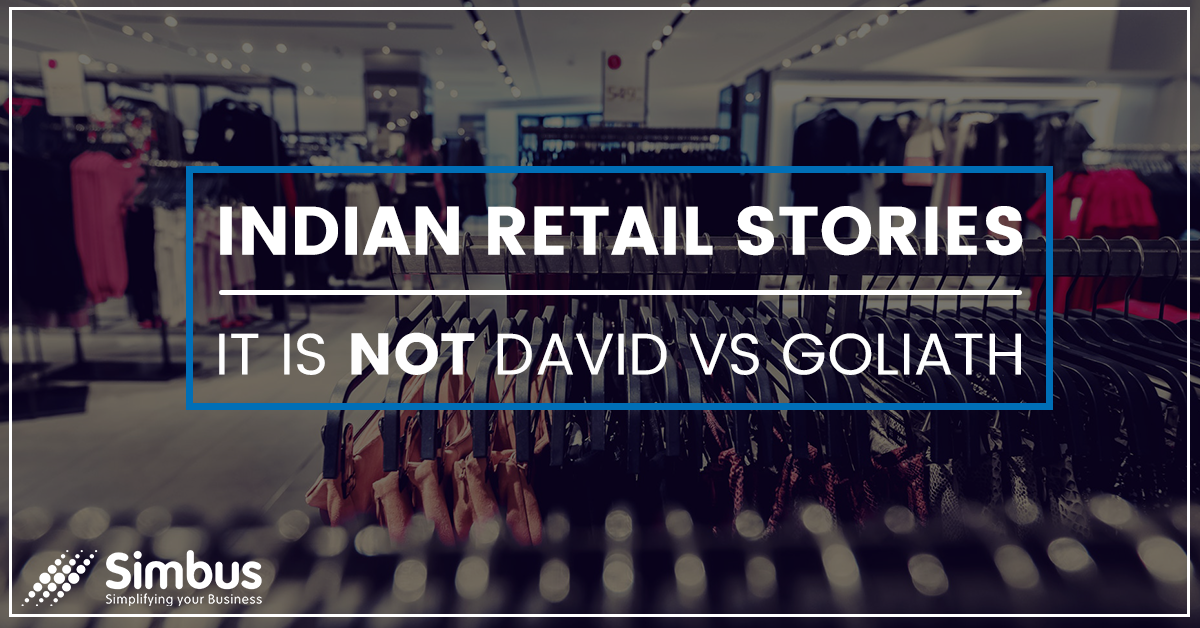
In India Retail there a silent revolution brewing in the Kirana industry right now? A revolution which has the potential to pitchfork Indian retail to the top of the world when it comes to adoption of technology and also when it comes to achieving a superb balance between the big box retailers and the millions of the small mom and pop stores. Can this model be replicated across the other sub-verticals of the retail industry like fashion, food and beverage, etc?
Indian Retail Industry:
In an interesting piece (Link to Article), Rahul Sachitanand in Economic Times has nicely chronicled how the retail giants like Metro Cash and Carry, Walmart and Reliance are wooing the 15 million plus Kirana stores, co-opting them in what seems like a silent revolution.
These companies are investing heavily to automate the mom and pop stores operations by extending technology support and also funding to ensure adoption of technology by the mom and pop stores which dominate the Indian retail landscape, accounting for a 90% market share.
How Advanced Production Planning and Scheduling Systems Can Enhance Supply Chain Management?
One is intrigued by the sudden interest shown by the biggies and that too in a sector which till recently was at loggerheads with the Bigbox Retail / eCom policy of the government over a level playing field! What does one read into this new found love? is it pangs of guilt at play or some smart strategy at work or is it the early signs of an all-out war to dominate the Indian retail and get control of the ecosystem?
Whatever it is, the picture will only become clear as this pans out in the coming months and years but these moves by the retail biggies throw up some interesting things to watch out for. I see the following five dynamics playing out in the years to come [No.. this is not porter’s five forces model, just a simple KK’s Pancha tantra model 🙂 ]
1) Visibility of Secondary/Tertiary Sales:
This has always been a utopian dream chased by the FMCG/CPG Brands which not only wanted a peek into the minds of the consumer but also wanted a clear way to optimize the supply chain by ensuring that the right assortments are at play.
With this IT backbone in place, this visibility is no longer a chimera BUT don’t be surprised if the retailers draw their pound of flesh for sharing the precious information with the FMCG companies. It looks like, with this move to lock in the small retailers with proprietary technology and a walled garden network, the retailers seem to have found leverage to tilt the balance of power in their favor.
2) The Rise of Private Labels:
With such a lock-in, it is safe to assume that retailers will use this advantage to push the private labels/brands to improve their margins. Will this reduce choice for customers? or will this open a lot more opportunities for the farmers and the Agri supply chain to sell in an efficient way to improve their realizations and fix a long-standing supply-side issue which has been plaguing the Indian Agri industry? Interesting times ahead…
3) The Arrival of the “Public” Omni Channel Model:
Over the last few years, we have been hearing ad hominem, stories of Omnichannel and the disruption it is going to cause. In a sense, these retailers were creating their Omnichannel distribution network. Obviously, the investments required to move the needle are huge but imagine the possibility of a shared “Public” Omnichannel distribution network! With 15 million points wired, can they become a huge web of fulfillment points for brands which are ready to pay a fee for using these fulfillment points? Just imagine the disruption it is going to create for omnichannel.
This model may be efficient in terms of cost and the carbon footprint, not to mention reducing the footprint of those pesky 2 wheeler riders delivering goods and adding to the traffic! Fun times ahead…
4) True Digitization of Payments:
With technology enablement at such a scale and with fintech companies offering handsome incentives, the kiranas will drive true digitization.
A top-down effort to force payment digitization down the throats of unwilling participants may be trumped by a true grassroots movement to accept cashless transactions in a massive way.
5) Improved Tax Compliance:
Hopefully such large scale digitization should help in improving both indirect and direct tax compliance. I am sure the government will step, either through regulation or through voluntary submission of data by the upstream participants to mine opportunities to improve tax compliance.
The coming years will be interesting to watch out as we are reaching an inflection point. The success of digital inclusiveness project of the Kiranas will be decided by the willingness of the upstream participants to make this as an open ecosystem benefiting large sections of the economy. Hope greed does not overtake this noble intention.
The changing landscape also opens up a lot of opportunities for the technology startups and established IT players like #SimbusTech. The smaller players can fill in the gaps in this complex mesh, which larger players have missed out.
This is my 5 cents, oops 2 cents on the subject. Look forward to hearing your views
Thank you, Read more blogs on:
- AI Agents in Kinaxis Maestro Boost Supply Chain Success
- Product Lifecycle Management and its impact on growth roadmaps for businesses
- How a cutting edge product innovation platform helps you reach your business goals?
- How a retail PLM software can help scale your business fast
- Your Ideal PLM for a Product Innovation Platform




